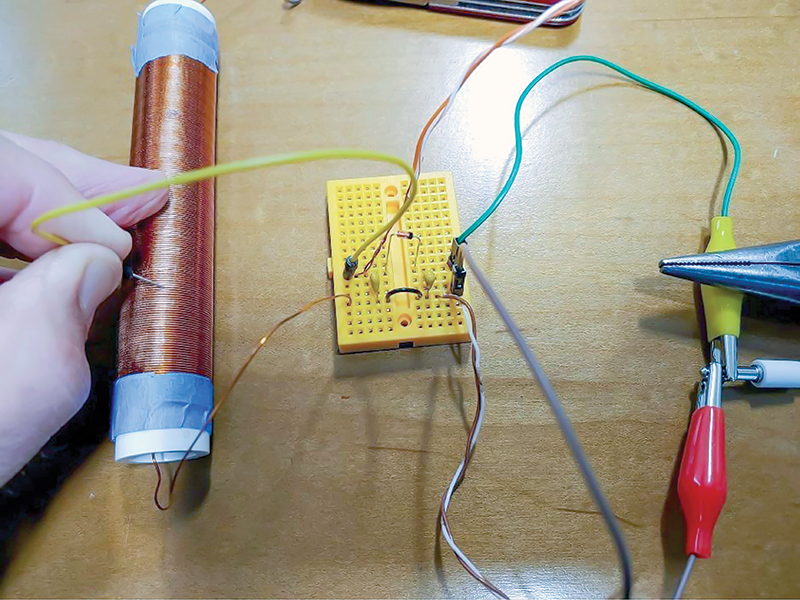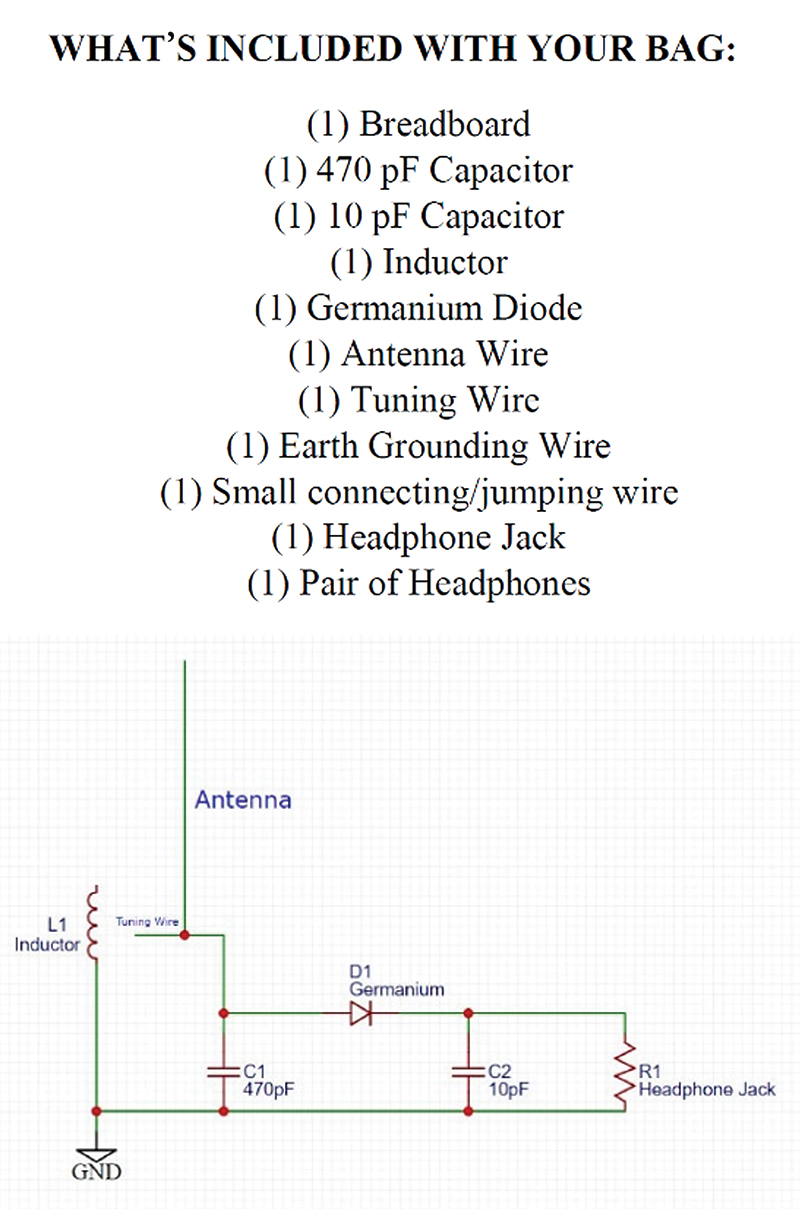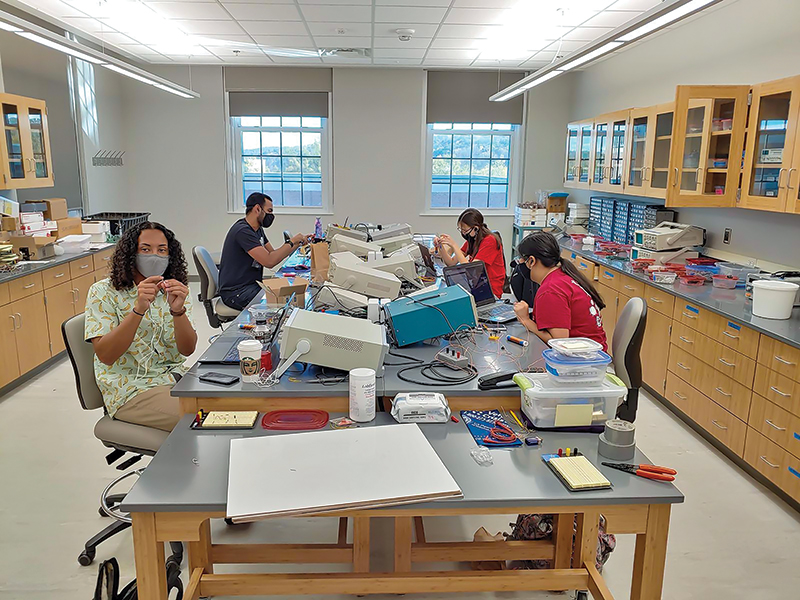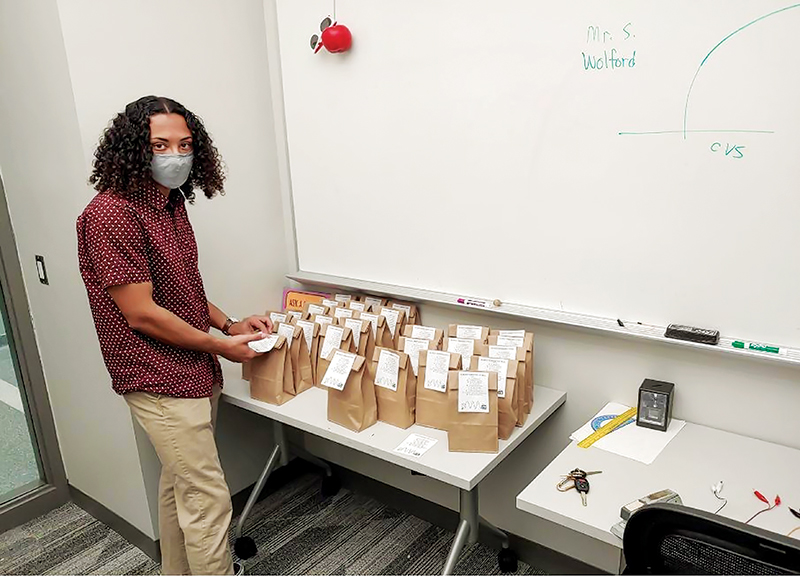Electrifying Young Minds with Outreach
Spring
2021
Feature
Electrifying Young Minds with Outreach
Dr. Rhett Herman, SPS Advisor, Radford University

The Radford University SPS chapter received an SPS Marsh White Award in support of “Electrifying Electronics,” an outreach event for guiding students through building an unpowered radio. Unfortunately, we had to postpone our plans when Radford University and Radford, Virginia, public schools went virtual due to COVID-19.

When Radford University resumed in-person classes in fall 2020, we held the event with a bit of a twist on the original concept. Instead of an in-person make-and-take event, we delivered experiment materials to students in preparation for a Zoom workshop. Our SPS members collected the materials in paper bags (which can be recycled!) and delivered them to Radford High School for students to pick up when they attended in-person class. We provided everything that they needed to build their radios, including an inductor coil made by our SPS students.
To host the Zoom event, five Radford SPS members and I gathered in a large lab on campus that permitted social distancing. We were joined online by Shannon Wolford, the physics teacher at Radford High School, and 19 students, who were connecting from their own homes.
The workshop began with our SPS students describing the physics behind radio reception and AM signals. The high school participants were then sent to one of four breakout rooms, each led by an SPS member. The SPS students had their own circuit bags ready and built their radios alongside the outreach participants. As advisor, I floated between breakout room groups to help with any questions.
Ironically, holding the event on an exceptionally clear fall afternoon made for poor experimental conditions. Clear weather is notoriously bad for AM radio propagation, and the afternoon is a particularly poor time for AM radio reception. Some of us of a certain age recall being able to pick up AM radio stations from far across the country at night and in times of bad, stormy weather. During the event, Wolford and I shared anecdotes of listening to WLS in Chicago from our childhood homes in Virginia and North Carolina, respectively—clearly, but only at night!
In the end, only one of the high school participants was able to hear a radio station during the event, as no one was in a sufficiently quiet location. Most participants were outside on this beautiful, clear day, which had a steady, moderate breeze. There were also near-constant industrial and road noises, even in our small mountain community. Our SPS members managed to pick up two distinct stations, but only after going into my office and closing the door. We told participants that they would have better luck hearing a radio station at night, when it’s quiet, and that their reception would be influenced by the weather. We also shared that solar activity would influence their reception, a comment that piqued the interest of more than a few students.
We learned a number of lessons from this initial event. Even though SPS members were at least 10 feet apart in a large room, talking all at once over Zoom led to a lot of cross-noise. For future events, the leaders of the breakout rooms will be in separate locations. Also, including a set of slides would help with explaining the basics of radio transmission and reception and would enable visuals for how to build the circuit from start to finish.
The Radford SPS students were excited to share their enthusiasm for physics with the community, and an SPS Marsh White Award provided the perfect opportunity to do so. We plan to repeat this event in the spring, as COVID restrictions permit.


